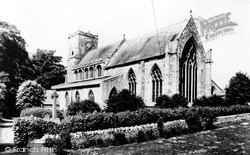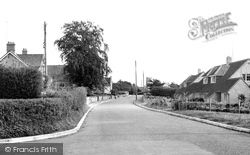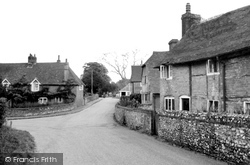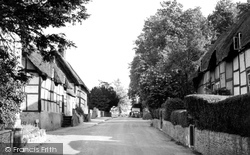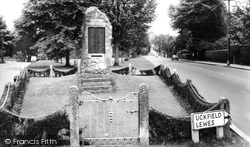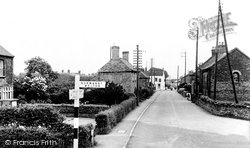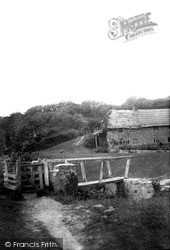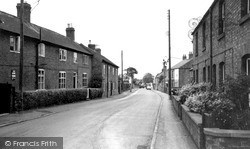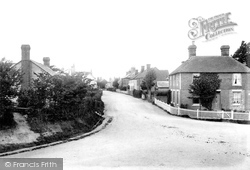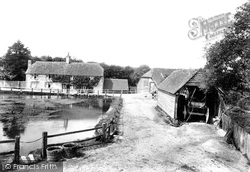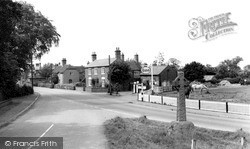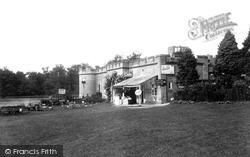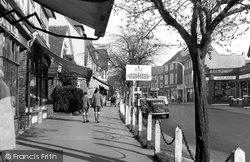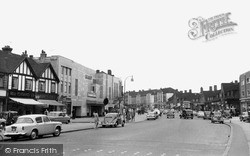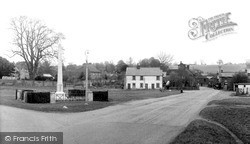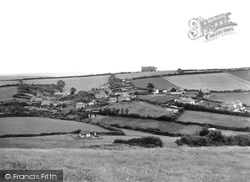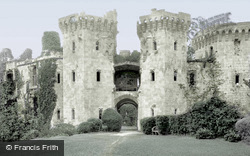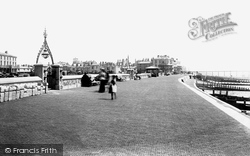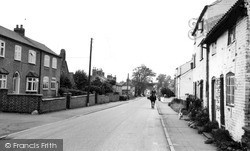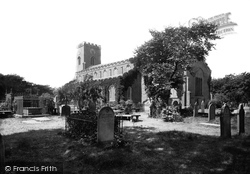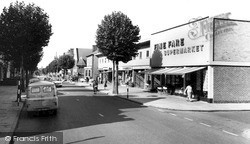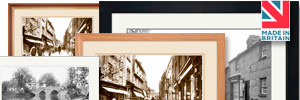Places
7 places found.
Those places high-lighted have photos. All locations may have maps, books and memories.
Photos
42 photos found. Showing results 81 to 42.
Maps
46 maps found.
Books
Sorry, no books were found that related to your search.
Memories
470 memories found. Showing results 41 to 50.
Love That Place!
Born at Petersfield in 1940, my first home was Berry Cottage, down Sandy Lane, opposite Sibley's farm. Berry cottage had only 4 rooms (2 up and 2 down), no running water, only a well and later a tap down in the lane. I remember ...Read more
A memory of Rake Firs in 1940 by
My Childhood Garden Part V
Beside the strawberry bed grew a large cooking apple tree that produced enormous green apples. We had a variety of both eating and cooking apple trees in the garden, the fruit from which was harvested and then ...Read more
A memory of Shamley Green in 1954 by
Early Memories Of An Ascotonian
I was born at 40 Bracken Bank (off Fernbank Road) in June 1953. I attended Ascot Heath Primary School on the original site in Fernbank Road, from 1958 until 1964. I remember Richard Dale from these days, although I ...Read more
A memory of Ascot in 1960 by
County Oak Tushmore Sports And Social Club
So named because members were from north of Crawley on the main A23 Brighton Road, not big enough to be a village, but a hamlet stretching half a mile north and south of todays Manor Royal Estate ...Read more
A memory of Crawley in 1954 by
Memories Of My Family
I was not born when my family lived in Kirkby Green but I have heard my mother tell a few stories of life there. She had a pet trout who lived in the Beck which ran past the back garden. She called him Peter and would go ...Read more
A memory of Kirkby Green by
Happy Childhood
I lived with my grandma Elizabeth (Lizzie) Bignell at No 10 Ten Cottages from 1943 to around 1948. The houses were Estate owned (and still are) and my grandad Robert Bignell worked at the manor house first as a shepherd and ...Read more
A memory of Wormleighton in 1946 by
Childhood In The Village!!
I was devastated in 1964 when my mother told me we were to leave the village so that my mother could pursue her dream of owning her own small business elsewhere. It was a dreadful culture shock, one that has remained ...Read more
A memory of Mollington in 1961 by
Snowing And Floating
Can't be too specific about the year, just know I was young. Perhaps we'd not been long in our house on Carr Lane, having lived in Dronfield before. What a treasure this house was, running water, separate bedrooms ...Read more
A memory of Dronfield Woodhouse in 1956 by
Married Quarters Inkerman Road
My dad was a military policeman stationed at Inkerman Barracks and we lived at No. 1 MSQ Inkerman Road. It was great fun there, the woods over the road, next to the Victoria Cafe (all now gone). To the side of No. 1 ...Read more
A memory of Knaphill in 1959 by
Kennack
I have been coming to Kennack since I was a toddler. But 1972 was the first of many years that stand out to me. My family met another family and we are still in touch now, 36 years and more later. My memories are so many, borrowing ...Read more
A memory of Kennack Sands in 1972
Captions
165 captions found. Showing results 97 to 120.
The path between the hedge and the stone wall is named the Cat Walk.
The view is north-eastwards from Finger Corner and the garden hedge of the Homestead (left foreground).
The parish church behind the holly hedge to the left at the corner of Ripley Road is partly Norman.
The sun is shining on another outstanding Hampshire village with some timeless timber-framed cottages and nicely cut hedges. The broadcaster Sir David Frost is rumoured to live here.
It is interesting to compare the height of the hedge with the one in photograph H252583.
Actually, several more things have disappeared, including the signpost, which has been replaced by much smaller signs that are partially covered by the hedge.
On reaching the Old Mill, the footpath across the fields from Lyme becomes a double-hedged dirt track through a carpet of wild garlic into Uplyme village. 17th-century buildings and the wooden paddles
This small village is set in an enclosure landscape of straight hawthorn hedges, between Fleckney and Countesthorpe, to the south of the city.
Here the photographer looks west along High Street; the picket fence on the right has been replaced by conifer hedging.
The stream flows in the foreground, and the Mill House is concealed behind hedges. The mill buildings on the right have been converted to a house, Mill Cottage. The wagon shed has gone.
The houses of the late 18th and early 19th centuries are almost picturesque behind hedges and walls, with a restrained petrol sign being all that is needed to alert drivers to the garage's presence - petrol
A previous Lord Byron, the fifth, an ex-Naval man, had a warship in the lake and built mock forts around its edges in the 1770s; this one is the only survivor, and is in fact a conversion of the stables
On the left, two uniformed schoolboys, probably from either Sutton Grammar or Sutton High School, are about to pass the hedge in front of Cheam Hall as they make their way towards the main junction.
It is difficult to believe, looking at Kingsbury Road, that the area retains many field hedges and trees; they were preserved quite carefully in the laying out of the 1930s estates, a definite plus for
The hedges are full with shepherd's rose, honeysuckles and all sorts of flowers, with the most beautiful of all flower gardens and shrubberies on your one hand and corn on the other.
Actually, several more things have disappeared, including the signpost, which has been replaced by much smaller signs that are partially covered by the hedge.
This small village is set in an enclosure landscape of straight hawthorn hedges, between Fleckney and Countesthorpe, to the south of the city.
The top of the same iron-railed gate as in the 1899 photograph (43872) can be seen in the hedge in the foreground.
The circular gun-ports at the base of the gatehouse walls are obscured by hedging.
On the left edge is the Royal Norfolk Hotel, rebuilt here in 1826 after the earlier one burnt down.
From opposite the Dog and Gun Pub, the camera looks along the straight village street with its assortment of restrained houses, hedges and walls.
Church is not far from the large cricket ground, where a socket of a stone cross (marking one of the resting places of St Cuthbert when he was being carried to his final tomb at Durham) was found in a hedge
The top of the same iron-railed gate as in the 1899 photograph (43872) can be seen in the hedge in the foreground.
As late as 1870, enclosure meadowland and hawthorn hedges stretched away from Wigston, but the ensuing period up to 1900 was to see a trebling of population figures as hosiers and boot and shoe manufacturers
Places (7)
Photos (42)
Memories (470)
Books (0)
Maps (46)


